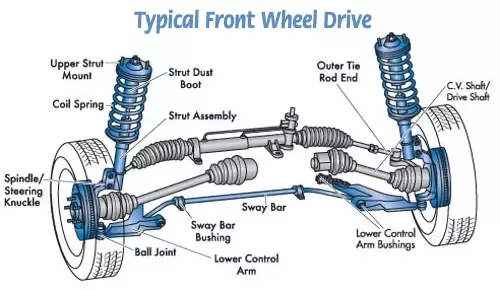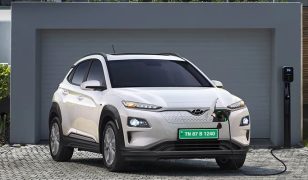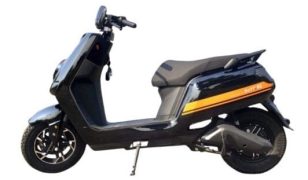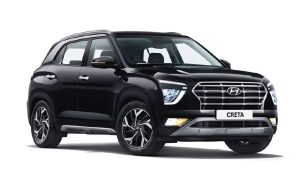Front-wheel drive (FWD) gives power to front wheels. Rear-wheel drive (RWD) gives power to rear wheels. 4 wheel drive (4WD) gives power to all wheels. Let us discuss in detail about the Front-wheel drive.
Some of the best selling Front wheel drive (FWD) cars are Honda City, Hyundai Verna, Hyundai i10, Maruti Vitara Brezza, Kia Seltos, Hyundai Creta and Tata Harrier.
Mechanism
An engine is the power generator of the car. It is placed in the front in some cars, middle in some cars and at the back in some cars. In the front-mounted engine, the engine’s direction can be along the longitudinal length or transversal length.

Engine power the drive shaft which rotates the wheel with the help of axle. In most of the cars, the engine is mounted in the transverse direction that is along the width of the car. As the engine is in the transverse direction, the crankshaft rotates in the direction we want the wheels to rotate. Also, the wheels are in the front, they are powered. As the front wheels are powered, there is less mechanism and fewer mechanical components are used to transfer power from engine to wheel.
Advantages
Fuel economy is higher in Front-wheel drive (FWD) compared to Rear-wheel drive (RWD) and 4 wheel drive (4WD) because less mechanical components are used to transfer power from engine to wheel. When fewer components are used, the weight is less and lesser weight aids in improving fuel efficiency.
Front wheel drives (FWD) cars are better in city commute.
Disadvantages
In the Front-wheel drive (FWD) cars, front wheels do the bulk of the work like steering the vehicle and transmitting power. Front-wheel drive (FWD) cars face the problem of Torque Steer and understeer. Torque steer is when you suddenly accelerate the car in lower gears but the steering turns away randomly and goes out of control. Understeer is the lower turning of the wheels.
Front-wheel drive (FWD) cars have lesser control and power compared to Rear-wheel drive (RWD) and 4 wheel drive (4WD).






